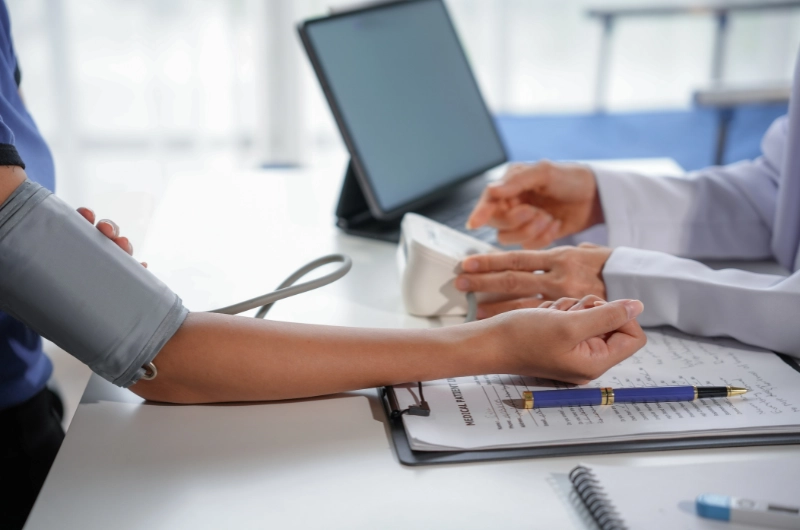.png)
Introduction
This leaflet contains specific information for cancer patients undergoing radiotherapy in the pelvic region. To ensure accurate treatment delivery and minimise potential side effects, you may need to prepare your bladder or bowel, or both for radiotherapy.
Understanding Your BLADDER and BOWEL (rectum)
The bladder and lower part of the bowel (rectum) are located in the pelvis. The bladder is a hollow organ that serves as a storage reservoir for urine. Meanwhile, the bowel (rectum) is a muscular tube that connects the colon to the anus. It stores faeces until they are ready to be expelled from the body during bowel movement. Moreover, the bowel can be filled with gas during this process. Both organs can change in size and shape when they are filled or empty which can lead to other organ position changes in the pelvic area.
.png) |
.png) |
| Female Pelvic Region | Male Pelvic Region |
You will need to follow the guidelines for bladder filling and rectal protocol outlined in this leaflet before your CT simulation scan and daily radiotherapy treatment.
AIM:
1. To ensure the bladder is comfortably full during CT simulation and radiotherapy treatment
2. To ensure the size of the bladder remains consistent throughout treatment to minimise the side effects and toxicities
3. To push the organs and structures lying above the bladder so that the radiation dose to those structures can be avoided
.png)
PROCEDURE:
- Empty your bladder about 30 minutes before your appointment.
- Drink 3 cups of plain water (600 ml) to drink. Finish drinking the water as quickly as you can.
- Inform the radiotherapy staff when you drank the last cup and record the time.
- Do NOT go to the washroom after drinking.
- Wait for 30 - 90 minutes to ensure your bladder is comfortably full.
- Inform the radiotherapy staff if your bladder is comfortably full. An ideal bladder volume is usually when you feel the need to pass urine.
- A quick scan will be performed on you to assess the shape and volume of the bladder.
- If the bladder is comfortably full, the Radiation Therapist will perform the CT simulation/treatment.
- If the bladder is not full, you will be given another cup of water. Wait for another 15 minutes to repeat the procedure.
- When your CT simulation/treatment is finished, you may empty your bladder.
.png)
Rectal Protocol of Pelvic Radiotherapy
AIM:
1. To ensure the rectum is completely empty during CT simulation and radiotherapy treatment
2. To reduce gas and faeces accumulation in the rectum
3. To reduce short and long-term side effects by achieving consistent rectum diameter each day of treatment.
.png)
PROCEDURE:
- Practise a low-residue diet to produce less stool and gas.
- Take laxative (Dulcolax) at least 2 days before the CT simulation/treatment.
- Use the enema in the toilet to empty your rectum before the procedure.
- You will be given 3 cups of plain water (600 ml) to drink.
- Inform the radiotherapy staff when you drank the last cup and record the time.
- Do NOT go to the washroom after drinking.
- Wait for 30 - 90 minutes to ensure your bladder is comfortably full.
- Inform the radiotherapy staff if your bladder is comfortably full. An ideal bladder volume is usually when you feel the need to pass urine.
- Start CT simulation/treatment once ready.
- When your CT simulation/treatment is finished, you may empty your bladder.
.jpg)
Our habitual actions lead to the accumulation of a significant amount of gas in the rectum. Here are a few guidelines to assist you in minimising gas in your bowel during CT simulation and radiation treatments.
Formation of the gas in the large bowel comes from two sources:
• Swallowed air
• Fermentation by gut bacteria
TIPS ON HOW TO REDUCE GAS PRODUCED BY GUT BACTERIA, LIMIT INTAKE OF FOODS:
- Legumes: dried beans, peas, lentils.
- Vegetables: broccoli, cauliflower, brussels sprouts, cabbage, kale, onions, garlic.
- Fruits: dried fruits, prunes, oranges, bananas.
- Drinks: sugar, alcohol, fizzy drinks, beer.
TIPS ON HOW TO SWALLOW LESS AIR:
- If wearing dentures, ensure they fit well to avoid swallowing excess air.
- Eat food slowly and try to relax while eating.
- Chew food well and with your mouth closed.
- Avoid carbonated drinks like pop, beer, and carbonated water.
- Drink fluids lukewarm instead of hot. Air is swallowed when hot drinks are sipped.
Achieving frequent and regular bowel movements
Gas can be a result of not having bowel movements every day or every other day. Here are some suggestions to keep your bowel movements normal:
• Go for a walk or stretch for 30 minutes most days of the week
• Drink plenty of fluids (aim for 8 cups of water each day)
• Avoid foods containing lactose (dairy products) if you are lactose intolerant (lactose is mostly present in milk and ice cream)
• Do not skip meals
.jpg)
Conversely, to decrease the buildup of gas and faeces in the rectum, it is recommended to adhere to these dietary guidelines that outline what foods are ALLOWED and NOT ALLOWED for a low-fibre/low-residue diet:
.png)
.png)
*If you have any inquiries or medical conditions that might affect your ability to follow these instructions, reach out to the radiotherapy staff for guidance.
Early Detection is the Key

Health Screening Packages
From: RM880.00
Meet Our Specialists

Dr Badrulhisham Bahadzor
Consultant Urologist
Dr Fam Xeng Inn
Consultant Urologist
Dato' Dr Loh Chit Sin
Consultant Urologist
